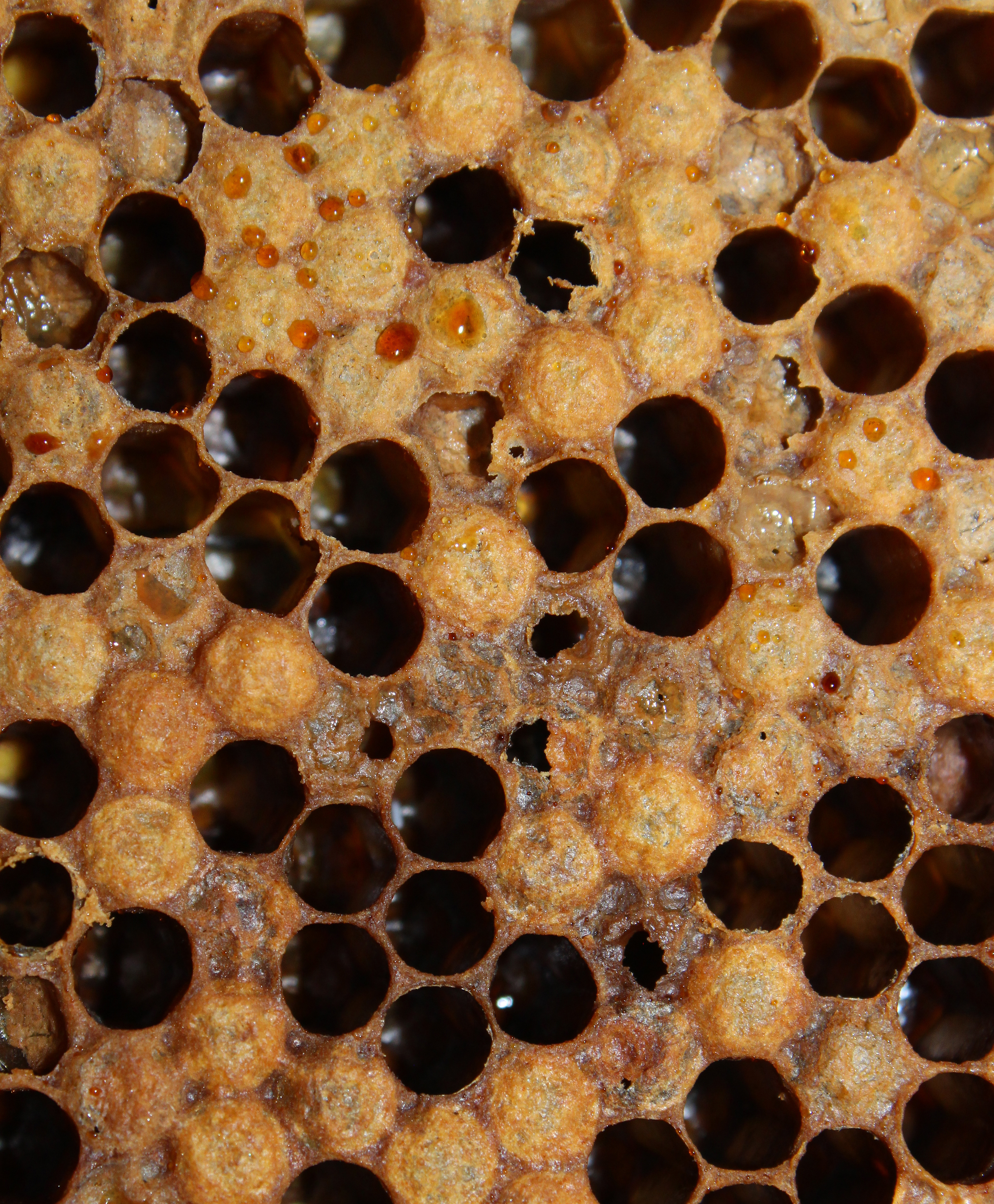Bee diseases: Diseases in young bees

Bee disease
Like all living things, bees are at risk from bee diseases and bee pests.
In the case of bee diseases, it is crucial to take precautions from the outset in order to safeguard the colony against sickness. Because the colony that has the disease that year cannot produce the desired productivity product, even with the ailment being treated. This results in financial loss.
Some illnesses make the colony weaker, while others make it completely vanish. The severe and highly contagious American foulbrood and Varroa illnesses must be reported. The beekeeper is required by law to notify the authorities if he becomes aware of the existence of these bee diseases in his apiary.
Diseases in young bees
-
American foulbrood – Bee disease
One of the most deadly Bee disease is American foulbrood. If it goes unnoticed and the required safety measures are not implemented, it will quickly spread throughout the apiary and seriously harm the beekeeper. The Bacillus Larvae bacterium is responsible for the illness. Puppies are infected by this bacterium as larvae and pupae. While it typically affects worker bee larvae, it can also occasionally be detected in drone larvae. In addition to killing the bee larva, the illness also makes it decay. In the early stages of the illness, the bacteria-infected larvae are light brown in color. As the illness worsens, they eventually transform into a black, sticky jelly near the cell’s base.

The mound cannot be cleaned by the bees since it dries and clings to the bottom of the cell. The smell of decaying meat or fish when the hive cover is opened is the main sign of an illness that is progressing.

The growth rate of the bees in a hive afflicted with American foulbrood abruptly stops. The hive enters a recession. Both open and closed honeycomb eyes can be seen on the frame’s offspring portions. The closed eyes have pale, sunken-in, and discolored lids. Closed eyes have little holes visible in their cell lids.
When the tip of the larva is grasped with a sharp object and tugged, the larva, which has decayed in the bottom of the cell and turned into a dark brown jelly, expands like a 3-5 cm long gum.
Despite the disease’s extreme devastation, it is easily treatable with simple drugs. But the greatest course of action is to stop the disease from spreading in the first place. Avoiding the purchase of bees, queens, honeycombs, hives, etc. from unidentified sources is the best way to prevent this disease.
-
European foulbrood – Bee disease
In spring and the beginning of summer, European foulbrood is more prevalent in weak hives. It occurs more frequently, particularly when nectar is in short supply. It spreads easily among people. The bacteria Bacterium Pluton and Bacillus Alvei are responsible for the sickness.

Only larvae are affected by the sickness. Rarely are puppies with sealed eyes infected. The infected larva’s color begins to change from white to gray. The letter C is the shape of a dead caterpillar.
Dark brown eventually turns to black. It typically smells like fried potatoes, however this can occasionally alter. When extracted, dead larvae cannot elongate. The same preventive and transmission strategies apply as they do for American foulbrood.
Precautions should be taken, especially if it is discovered in a hive, to stop it from infecting other colonies. Rapamycin is a medication that is successfully utilized for both therapeutic and preventative purposes.
-
Stone Disease – Bee disease

The mold fungus known as Aspergillus Flavus is the root of this disease. The combs affected by this condition seem green. The internal organs are impacted, and the larva dies as a result. The larvae fill the cell to the brim before drying out and becoming mummified. These fungi can live in honey and spread their spores there, which allows them to spread to people. As a result, it is hazardous to consume honey from hives that have stone sickness. The illness has no known treatment. Both the hives and the combs need to be cleaned and burned. It is not a widespread illness.
-
Bag Syndrome – Bee disease
The majority of cases of this disease are seen in young puppies and poorly kept hives, which spend the winter in unfavorable settings and emerge badly in the spring.

It is not as harmful to pups as other illnesses. If maggots are captured using an awl, such as in a bag of water, they can be removed with ease. In order to avoid and treat the disease, it’s important to feed the bees well in the spring, monitor the hives’ temperatures, make sure the brood doesn’t become chilled, and remove any excessive numbers of infected honeycombs.
These were some of the interesting bee diseases. There are many benefits to bees, but they also get diseases and epidemics because they are also creatures.
You can check out this article that talks about facts about bees







3 Comments